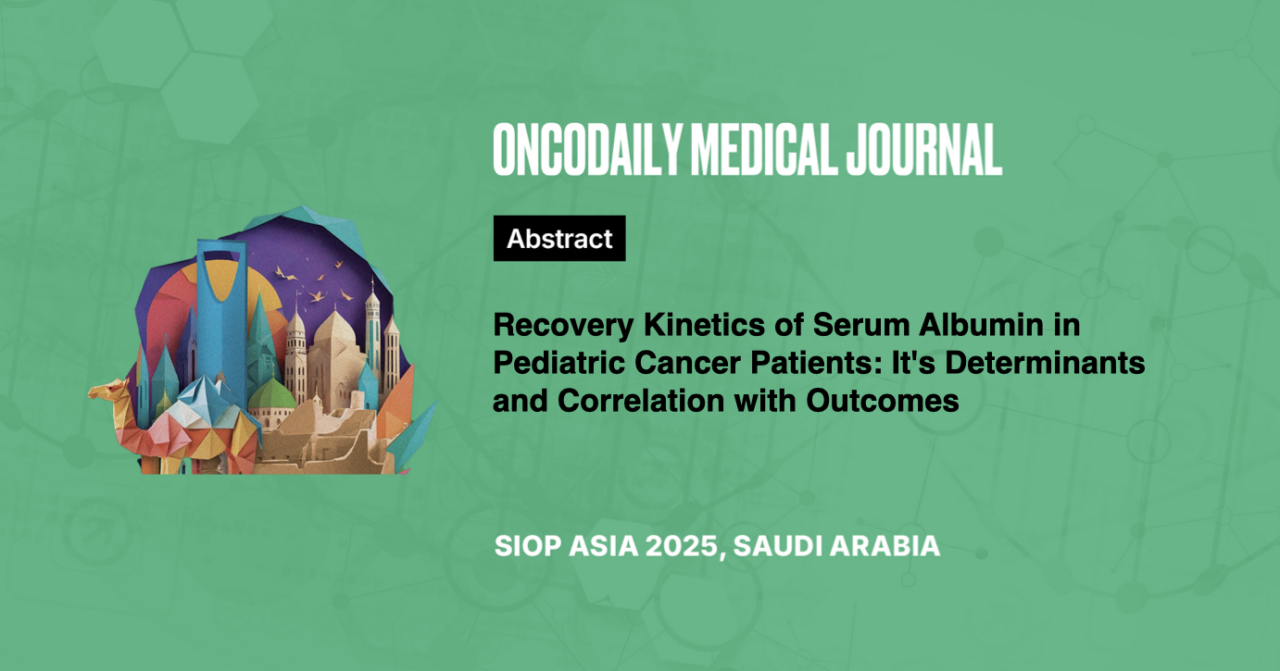Abstract
Introduction: Hypoalbuminemia and cancer-cachexia predict poor survival and chemotherapy-toxicity in adult-cancers, with limited literature in pediatrics. Also, the recovery-kinetics of serum-albumin and its effect on cancer-outcomes is unknown. This study investigated trends and determinants of serum-albumin at various time-points and their influence on 3-year-survival of pediatric-cancers.
Methodology: The study included cancer patients≤18yrs and excluded those with liver/kidney diseases and relapsed-malignancies. Baseline systemic symptoms, stage/risk-group, nutritional status, serum-albumin at baseline, 3-months, 6-months and 12-months of therapy were recorded along with outcomes like relapse/death and toxicity. Analysis was done to identify the determinants and impact of serial albumin values.
Results: A total of 402 patients were enrolled. Median age was 4yrs(2.5mo-14yrs), majority were hemato-lymphoid cancers(57.71%), with 50%, 19% and 31% belonging to high-risk, intermediate-risk and low/standard-risk respectively. While 59.20% had systemic-symptoms, 46.97% had malnutrition. The optimum cut-off albumin that predicted survival was 4.0g/dl. Prevalence of hypoalbuminemia at baseline, 3m and 6m were 46.52%,26.45% and 22.0% respectively. The 3-year overall-survival(OS) was lower for patients with hypoalbuminemia at baseline(44.9% vs 69.8%;HR=2.1,P=0.00), 3m(HR=2.28;P=0.00) or 6m (HR=2.02;P=0.001) in univariate-analysis. On multivariate-analysis, only risk- group (HR=1.74;P=0.01), 6m-albumin (HR=3.33;P=0.00) and first 6m albumin-trend (HR=1.84;P=0.02) were independent predictors of OS, but not baseline-albumin(HR=1.23;P=0.57) or 3m albumin(HR=1.18;P=0.63).
Only risk-group (HR=1.59;P=0.02) and 6m-albumin (HR=2.91; P=0.00) were significant predictors for event-free-survival(EFS). Liver/spleen size(r=-0.39) and serum-globulin(r=-0.37) had moderate negative correlation with baseline-albumin. On multivariate-analysis, systemic-symptoms(OR=8.01,P=0.01) and baseline-malnutrition (OR=2.08;P=0.00) were independently associated with baseline-hypoalbuminemia. In contrast, 6-months albumin was dependent only on baseline-systemic-symptoms(OR=5.28;P=0.01), but independent of baseline-malnutrition(OR=1.72;P=0.09). Also, hypoalbuminemia at baseline, 3m or 6m was associated with increased risk of febrile neutropenia(OR=1.29;P=0.01) and hospitalization(OR=2.86;P=0.00).
Conclusion: Baseline risk-group and 6m-albumin are independent predictors of OS/EFS, rather than baseline-albumin. While baseline-albumin is influenced by malnutrition, systemic-symptoms, inflammatory state(hypergammaglobulinemia) and disease-bulk(organomegaly), the 6-months-albumin is independent of baseline-malnutrition and likely a better indicator of the cancer-inflammation-cachexia-cascade to predict disease-outcomes in pediatric-cancers.





